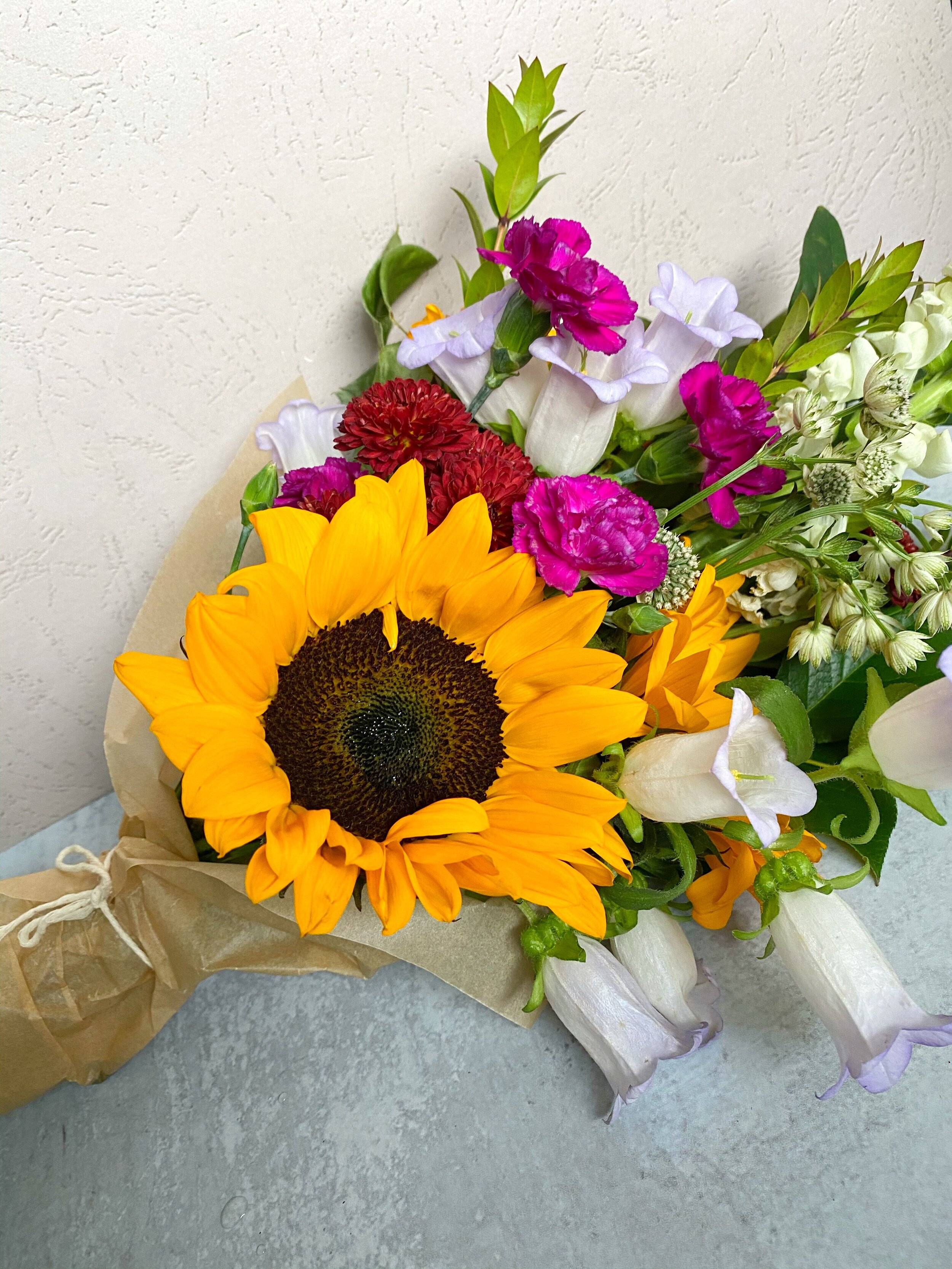Tips for Going Green in Floral Design: Important Info to Consider
Making the change to being truly sustainable can seem overwhelming. There are a lot of options you have to think through: biodegradable, compostable, recycled, and home compostable.
But what are the differences between these, and what does that mean to a florist?
Flowers have a high carbon footprint. Overseas delivery, plastic packaging, and single-use items contribute to florists creating more carbon emissions and waste that damage the planet.
Simple changes to how you purchase flowers—and how you deliver them—can significantly impact this carbon footprint!
First, let’s define some terms!
Biodegradable Floral Supplies
Biodegradable simply means it will degrade at a rate faster than plastic (it takes 80-500 years to decompose plastic fully). However, this doesn’t necessarily mean it’s good for the planet!
Bioplastic—made from corn—will degrade into tiny pieces in about 80 years, but will be too small to pick up even with a pair of chopsticks. So in a landfill or ocean setting, it can still impact wildlife negatively. It will take another few years to decompose if not properly recycled.
Compostable Floral Supplies
Floral supplies that are labeled compostable mean they will break down quickly within a few months. However, there are two different types of compostable materials: industrial and home compostable.
Industrial Compostables
Industrial compostable materials will only decompose in a composting facility because of the high heats machines can create. A lot of areas do not have a composting facility yet. So these ingredients get thrown into a landfill where they will degrade at a rate similar to biodegradable materials.
Home Compostables
Home compostable means you can throw it in your home compost bin, and it will decompose on its own in a few months.
Don’t have a compost bin? That’s fine! In a landfill setting, it will still break down faster than industrial compostable materials. It is the best option outside of reusing!
So now you know the difference and want to be more sustainable. Where do you start?
Read labels! Just like the organic labeling process, packing materials have to go through numerous tests to be labeled home compostable.
Make sure you are reading what can and cannot be composted at home.
Examples of Home Compostable Items
Unbleached, chlorine-free parchment paper for wrapping bouquets. If You Care is a great brand! They are even water-resistant, so if you use a hydration wrap, they won’t leak through the paper right away!
EcoFresh Bouquet Wraps for hydrating stems
Beeswax wraps for sealing the hydration wraps so they won’t get on your parchment paper
Organic cotton twine for wrapping everything together
Compostable cards for business information, message cards, or anything you might need! Noissue Co. is a great brand for these and shipping materials as well. They are fully customizable and home compostable.
Another good thing to remember is who you are buying from! The materials might be what you’re looking for, but is the company environmentally conscious? Will they donate a tree for your purchase?
Supporting more eco-friendly businesses will make this sustainable push more accessible to everyone.
Make it Earth Day every day by changing small parts of your business in eco-friendly ways! The Earth gives us these beautiful flowers. Let’s respect her by treating her beautifully as well.









